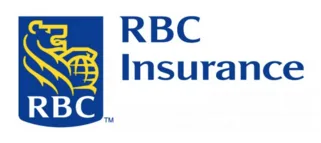Compare life insurance companies
What is life insurance?
Life insurance is a financial safety net for your loved ones in the event of your passing. Think of life insurance as a contract between you and your insurance company. You pay a premium to maintain your coverage and when you die, your insurer pays out your policy to your beneficiaries. This payment is known as a death benefit.
Protect your family from financial instability with the security of a life insurance policy designed to settle your debts, pay for funeral costs, set up an inheritance or even help with medical expenses if you’re unable to care for yourself. That way, your friends and family can focus on healing after loss and celebrating your life.
How does life insurance work?
Get quotes from a range of insurers to find a
policy that suits your budget and needs.
Once you’ve settled on a policy,
choose your coverage amount and select riders.
Submit your personal and contact details,
as well as information about your income and employment. You might have to fill out a
health questionnaire or take a medical exam, too.
Your insurer will charge a monthly or annual premium
to keep your policy active. Try to make timely payments to avoid a policy lapse.
Key terms
When is life insurance paid out?
The death benefit is paid out when you die. It’s typically paid out in a lump sum — but you can instruct your insurer to pay the death benefit in installments or annuities.
Your beneficiaries can then use the money however they wish. These are some of the most common ways people spend the cash:
- Mortgage payments
- Living expenses — like utility bills, groceries, rent, health and car insurance
- Cosigned debts — such as student loans or credit cards
- End-of-life expenses — including funeral costs and unpaid medical bills
- Child care
- Long-term care — like a nursing home or medical expenses for ailing parents
- College tuition
Is the death benefit taxed?
No. Fortunately, the death benefit isn’t considered part of the beneficiary’s taxable income. However, if the policy had an investment component that generated interest, the estate (not the beneficiary) might be subject to income tax. By the time the beneficiary receives the death benefit, income tax has already been covered by the deceased’s estate.
Can I access the money before I die?
Maybe. There are 2 ways you can tap into your policy while you’re still alive:
1. Living benefits riders.
Some insurers offer living benefits riders, which pay out your policy early in certain circumstances. These include:
- Accelerated death benefit rider. If you’re diagnosed with a terminal illness, this rider pays out a portion of the death benefit.
- Critical illness rider. If you’re diagnosed with a critical — but not terminal — illness, this rider kicks in to pay a lump sum. Heart disease, cancer, stroke and kidney failure are some of the most common covered illnesses.
- Disability income rider. If you become totally disabled and can no longer work, this rider will pay a monthly cash benefit for a specific period of time.
2. Cash value in permanent policies.
More on this in a minute, but these policies accumulate cash value over time. Once you’ve built up enough cash value, you can begin to borrow against your policy.
Different types of life insurance
Life insurance plans are lumped into 4 main categories: term, permanent, no-medical exam and group life policies.
Term life insurance
Provides protection for a set period of time, like 10, 15 or 20 years.
Permanent life insurance
A life insurance policy and investment product rolled into one, these policies offer lifelong coverage and accumulate cash value over time. When you pay your premium, a portion will go towards the cash value of your policy, which earns interest as it grows.
Whole life insurance
- The simplest permanent plan, whole life insurance earns a fixed rate of return set by your insurer.
Universal life insurance
- The cash value is tied to a stock index, such as the S&P 500, and earns interest based on the current market rate.
Variable life insurance
- The cash value of this policy is invested in a portfolio of stocks, bonds and mutual funds of your choice.
Variable universal life insurance
- A hybrid policy that offers flexible premiums and the ability to invest your cash value in investments that match your risk tolerance.
No-medical exam policies
If you don’t want to take a medical exam for whatever reason, these are your policy options.
This policy requires you to fill out a health questionnaire, and there are a few “knockout questions” that could deny you coverage.
A “no questions asked” policy that skips
both the health questionnaire and medical exam. Coverage is guaranteed.
Also known as burial insurance, this policy is designed to cover end-of-life expenses and funeral costs.
Group life insurance
A type of term life insurance offered through the workplace as part of employee benefits.
But that’s not all: There are other niche types of coverage, like joint life insurance insurance and mortgage life insurance.
Who needs life insurance?
Here’s the golden rule. If you have loved ones who depend on you financially, you most likely need life insurance. Your policy can help to provide for them when you’re gone. These people have the greatest need for life insurance:
- Parents with children or other dependents
- Breadwinners
- Those with co-signed debt
- Business owners
- Homeowners
- Those with medical expenses
- Wealthy individuals planning their estate
- Stay-at-home parents and/or partners
- Those who may be in need of future long-term care
How to get a life insurance policy
1. Compare policies
![]()
Get quotes from a range of insurers to find a policy that suits your budget and needs. Once you’ve settled on a policy, choose your coverage amount and select riders.
2. Apply for coverage
![]()
Provide personal, contact, employment and income details. You might have to fill out a health questionnaire or take a medical exam too.
3. Pay your premium
![]()
Your insurer will charge a monthly or annual premium to keep your policy active. Try to make timely payments to avoid a policy lapse.
How much does life insurance cost?
While rates can vary wildly, the average cost for life insurance is less than $50 a month. For example, a 20-year term life insurance policy worth $100,000 for a male non-smoker between the ages of 30 and 40, assuming he’s in relatively good health, would average around $18-$26 a month.
Your rate depends on a range of factors, like your age, gender, health, occupation, lifestyle and whether you’re a smoker. The coverage amount, term length and type of policy you’re applying for come into play, too. Insurers weigh these factors differently, which is why it’s important to compare quotes from multiple companies.
It really comes down to how much coverage you can afford. When you’re doing the math, factor in these 3 things:
- Income. The golden rule is to buy a policy that would replace your income and cover your family’s cost of living for 5-10 years. To do this, multiply your salary by 5 or 10.
- Assets. As you move through life, you’ll most likely acquire assets such as a house, car, savings account or RRSP. Your life insurance policy should protect these assets. Figure out their value and add that dollar figure to your coverage.
- Financial obligations. Total all of your expenses now and those you can expect in the future — like childcare or college tuition.
Managing a life insurance policy
There’s a little bit of life admin involved in buying and maintaining a life insurance policy. Here’s what you need to know.
Choosing and changing beneficiaries
Most people name their spouse or children as their beneficiaries, but you don’t have to. You can choose another family member, friend, business partner, charitable organization or a legal entity — like an estate or trust. Things can get a little complicated if you want to elect a minor.
You may name multiple beneficiaries, and indicate which percentage of the death benefit should go to each. You can usually update the list at any time.
Canceling your policy
You can cancel your life insurance whenever you want. But you’ll only receive a refund of any premiums you paid in these situations:
- You cancelled during the “free look period,” or “cooling-off period.” When you buy a policy, your insurer is legally required to give you time to change your mind. This is the free look period, and it usually lasts 10 days.
- You bought a return of premium rider. If you cancel your coverage, you’ll be reimbursed for the premiums you paid — minus any administrative fees.
What kind of life insurance do I need?
Start by deciding whether you want coverage for a certain period or the rest of your life. Term life covers you for a specified period of typically 5 to 30 years, with options to convert your policy to another term if you need. Whole life insurance is a type of permanent policy, with lifelong coverage and a cash value component plus dividends.
Term life insurance
Easily the most practical and affordable life insurance option, term life insurance offers coverage for a predetermined period of time.
Whole life insurance
Whole life insurance provides lifelong coverage at a fixed rate, while building in cash value.
Universal life insurance
Universal life insurance offers both lifelong coverage and an investment component that tracks the major indexes.
Variable life insurance
This investment focused life insurance policy is for experienced investors looking to grow and use the cash value component of their policy later in life, tax deferred.
Joint life insurance
Joint life insurance is a single policy, term or whole, that aims to meet the needs of two people, usually married.
Disability insurance
This type of insurance provides a necessary income should you become afflicted with a debilitating injury or illness and are unable to work.
Life insurance policy options
| Term life | Whole life | Universal life | Variable life | Variable universal life | |
|---|---|---|---|---|---|
| Length of term | 1 to 30 years | Life | Life | Life | Life |
| Cost of premium | Level premiums | Level premiums | Premiums can vary | Level premiums | Premiums can vary |
| Guaranteed death benefit | |||||
| Guaranteed cash value | May be exhausted to pay premiums, safeguarded from risk | ||||
| How your money appreciates or depreciates | N/A | Set rate of interest | Variable rate of interest | Pooled accounts managed by investors | Pooled accounts managed by investors |
| What you should know | You can’t lose coverage, and you receive no premium refund at the end of the term | Not as flexible as other life insurance options | Flexible policy options and premiums | High-priced policy with no or minimal cash appreciation | High-priced policy with no or minimal cash appreciation |
How is life insurance paid out?
The death benefit is paid out when you die. Most life insurance providers pay out claims within 60 days, with most states allowing your insurer up to 30 days to investigate your claim, if necessary. It’s typically paid out in a lump sum — but you can instruct your insurer to pay the death benefit in installments or annuities.
Your beneficiaries can then use the money however they wish. These are some of the most common ways people spend the cash:
- Mortgage payments
- Living expenses — like utility bills, groceries, rent, health and car insurance
- Cosigned debts — such as student loans or credit cards
- End-of-life expenses — including funeral costs and unpaid medical bills
- Child care
- Long-term care — like a nursing home or medical expenses for ailing parents
College tuition
How to compare life insurance policies
To find a comprehensive life insurance policy at the best rates, look into how coverage amounts affect your premiums, the flexibility of your policy options and additional riders or features specific to the providers you’re interested in.
To simplify the process of comparing different policies, ask yourself:
How much coverage should I get?
Given the general unpredictability of life, there’s no one universal answer for how much coverage you should buy. Experts will tell you to start with a multiple of your annual income — up to 10 times your salary. Generally, you want to determine an amount that will cover immediate and ongoing costs after you die, so that your family and other dependents can support their current way of life.
When determining how much coverage is enough to protect your family, consider your debts, living expenses and lifestyle. Also plan for how your loved ones will pay for your funeral, burial and related expenses.
1. What types of debt will you leave behind?
Think about how much of your salary goes to pay down debt and how much you pay monthly or annually toward:
- Outstanding mortgage payments.
- Rented properties.
- Personal debt like personal loans, car loans or credit card balances.
2. How much do you already have for your family to fall back on?
Think about the number of years you might need to cover your family’s living expenses and whether savings or assets can offset those costs after your death, including:
- Accumulated savings.
- Assets that your family can sell.
- Investments like property or stock.
- Employer-sponsored retirement plans or an RRSP.
3. What are your family’s ongoing living expenses?
Factor into your life insurance coverage everyday and even irregular expenses, like:
- Transportation costs, including car maintenance and gas.
- Property and income taxes.
- Food, clothing and utilities.
- Future education and childcare costs.
- Car, health and homeowners insurance.
- Entertainment and vacations.
4. How long will your family need coverage?
At some point, your family may be able to rely on government benefits and other investments. But until then, think about:
- Your age.
- The ages of your partner and children.
- The earning capacity of your partner today and in the future.
- Anticipated funeral expenses.
What affects my life insurance premiums?
To calculate your policy’s premiums, life insurance providers engage a complicated review of your age, health and lifestyle called underwriting. They often run these details through proprietary algorithms and analytical tools to determine the level of risk in taking you on as a policyholder.
How a life insurance provider rates you within each category varies, but most consider:
- Your age. Age is the No. 1 factor that determines your premiums. Generally, the younger you are, the less of a risk you present to the insurer — and the lower premiums you’ll pay.
- Your gender. Women generally live longer than men. Because this means a policy will likely be longer, they tend to have lower premiums than men.
- Your health history. If you have a history of medical conditions, an insurer might consider you a risk for future, more serious issues, bumping up your premium accordingly. If you can prove to the insurer that you’re managing any existing condition, it might help you lock in a lower rate.
- Your occupation and lifestyle. If you work in a dangerous field or embrace life like a daredevil, potential insurers may consider you a person with high potential for death. Because most insurers will assume an inevitable policy payout, your premium will undoubtedly be high.
- Your relationship with alcohol and nicotine. Drinking and smoking are risks to your health, and you could end up paying double the life insurance premium for those with less risky habits.
- Your family’s medical history. If you come from a line of relatives with serous health issues, especially hereditary conditions, insurers might conclude that you will too, resulting in higher premiums.
- Your driving record. Today, many insurers consider your actions behind the wheel when determining costs. If you’ve racked up driving violations or serious convictions, you might pay higher rates.
Should I buy directly or through a broker?
You have options when shopping for a life insurance policy. You’ll find brokers that work with a range of companies to help you find the best prices in their network on the coverage you need, but they may not offer the personalized service you’ll find with a direct agent.
Both broker and agents work on behalf of providers to sell you a life insurance policy. It all comes down weighing each against what you’re looking for.
Buying life insurance from a broker
- Not limited to one provider, offering access to a wide range of products for potentially greater choice.
- Can flex their knowledge of the market to help you find coverage to suit your circumstances.
- Can help you assess your situation to determine the type and amount of coverage you need.
- Can offer overall advice regarding life insurance and annuities.
- Depending on their expertise, may offer higher coverage levels and stronger features outside of your typical policy.
Buying direct from an insurance provider
- Limited to one provider’s products, though with expertise to talk about them in detail.
- May allow you to fully sign up online or by phone, with immediate conditional approval.
- Online providers may offer faster underwriting and turnaround.
- Direct products are beginning more — with some offering coverage amounts of up to $15 million.
Life insurance FAQs
Read more on Life Insurance
-
Compare life insurance for over 50 in Canada
Find out what life insurance policy to get if you’re over 50, and how to get affordable premiums.
-
What are the leading causes of death in Canada?
Cancer tops the list of most common causes of death in the Canada. Find out what the other leading causes of death are too.
-
Compare life insurance for seniors
Compare life insurance policies for seniors, which can help pay for end-of-life expenses.
-
Universal Life Insurance
A type of permanent life insurance that offers flexibility and invested cash value, but is it the right investment option for you?
-
Permanent Life Insurance
A permanent policy doesn’t expire and can build cash-value. It gives you the satisfaction that your loved ones will always be taken care of – but is it worth the cost?
-
Critical Illness Insurance
Critical illness insurance provides you with a lump sum benefit in case you become seriously ill and can’t work. Learn about it and if it’s the right insurance option for you.
-
PolicyMe Life Insurance
Save money and get easy approval when you apply for life insurance coverage with this reputable online provider.
-
Life Insurance Through PolicyAdvisor
Get big savings on your premiums when you use this digital platform to compare life insurance quotes.
-
Whole Life Insurance
Learn about whole life insurance – a policy that should last your entire life – and find out how to get the right option for you.
-
Manulife Life Insurance review
Learn about insurance policies and products Manulife offers.







